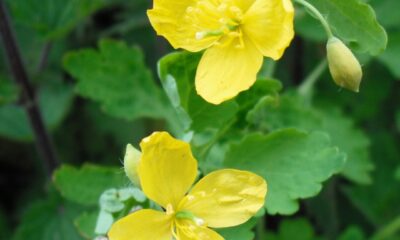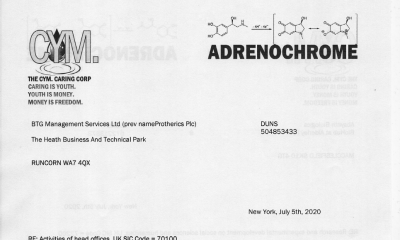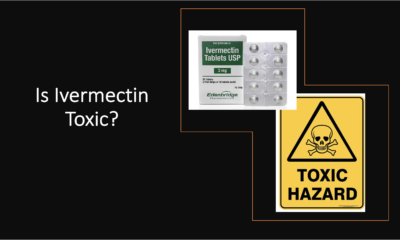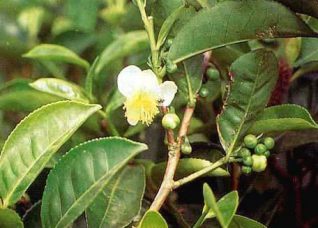Published online 2019 Feb 28
doi: 10.3390/molecules24050855
Johanna Willer,1 Karin Jöhrer,2 Richard Greil,2,3 Christian Zidorn,1 and Serhat Sezai Çiçek1,*
Roberto Fabiani, Academic Editor
Abstract
In our continuing search for new cytotoxic agents, we assayed extracts, fractions, and pure compounds from damiana (Turnera diffusa) against multiple myeloma (NCI-H929, U266, and MM1S) cell lines. After a first liquid-liquid solvent extraction, the ethyl acetate layer of an acetone (70%) crude extract was identified as the most active fraction. Further separation of the active fraction led to the isolation of naringenin (1), three apigenin coumaroyl glucosides 2–4, and five flavone aglycones 5–9. Naringenin (1) and apigenin 7-O-(4″-O–p–E-coumaroyl)-glucoside (4) showed significant cytotoxic effects against the tested myeloma cell lines. Additionally, we established a validated ultra-high performance liquid chromatography diode array detector (UHPLC-DAD) method for the quantification of the isolated components in the herb and in traditional preparations of T. diffusa.
Keywords: multiple myeloma, quality control, naringenin, flavonoids, traditional preparation
1. Introduction
Turnera diffusa Willd., Passifloraceae, commonly referred to as damiana, is a shrub occurring in north-eastern Brazil, Mesoamerica, the Caribbean, Mexico, and Texas [1]. The traditional use of T. diffusa in Latin America encompasses usage as an aphrodisiac, a tonic, and for the treatment of diabetes [2,3]. Damiana extracts with tequila are allegedly used as love potions [3]. Due to the long history of T. diffusa as an aphrodisiac, both the stimulating effect as well as the underlying mechanisms are relatively well investigated. In animal testing, the aqueous extract of T. diffusa was found to increase the sexual activity of rats [4]. The flavonoids obtained by percolation with methanol, and here especially the flavanone pinocembrin, were identified as aromatase inhibitors resulting in increased testosterone levels and improved libido [5]. Regarding the antidiabetic activity, conflicting results were obtained. Whereas Alarcon-Aguilar et al. could not find any hypoglycemic effect of an ethanol-water extract [6], Parra-Naranjo et al. demonstrated hypoglycemic effects of a methanol extract and identified teuhetenone A, a nor-sesquiterpene, as the active principle [7].
Apart from traditional usage, an aqueous extract of T. diffusa was found to inhibit the monoamine oxidase A with IC50 values of 130 mg/mL as well as the acetyl- and butyrylcholinesterase with IC25 values of 0.352 and 0.370 mg/mL, respectively [8]. Additionally, cytotoxic effects of a methanolic extract against breast carcinoma cell line MDA-MD-231 were demonstrated [9]. Though the mechanism behind the observed cytotoxicity remains unsolved, the compounds responsible for cell death induced by the methanolic extract were identified as arbutin and apigenin.
The antioxidative effects of flavonoids are well documented and linked to certain structural features such as a dihydroxylated B-ring, a double bond located between C2 and C3, and a 4-oxo function at ring C [10]. Moreover, flavonoids are known to influence the metabolism, e.g., by inhibiting oxidases or activating antioxidative enzymes [11,12]. However, for flavonoids isolated from T. diffusa a variety of additional activities were reported. Velutin (7), a dimethoxylated hydroxyflavone known from the açaí berry (Euterpe oleracea Mart., Arecaceae), has been shown to possess strong anti-inflammatory effects by inhibiting NF-κB activation as well as p38 and JNK phosphorylation and hence by down-modulation of the expression of TNF-α and IL-6 [13]. At low doses, velutin (7) is more potent than established anti-inflammatory agents such as apigenin. Brito et al. found that the anti-inflammatory effect of velutin (7) against periodontitis is caused by an inhibition of HIF-1α expression [14]. Besides, the compound was reported to possess cytotoxic effects against human nasopharynx carcinoma (KB) cells with an IC50 value of 4.8 µM [15]. Acacetin 7-O-methyl ether (9), another methoxylated flavonoid, showed moderate cytotoxic effects on HeLa cells. Subsequent testing focused on the influence of aminoalkylation of acacetin 7-O-methyl ether (9) and the resulting antiproliferative activity against three human cancer cell lines (HeLa, HCC1954, SK-OV-3) [16]. The Mixe Indians (Oaxaca, Mexico) use an aqueous extract of Calea zacatechichi Schltdl. (Asteraceae) as a remedy for malaria. In subsequent experiments, the flavone genkwanin (6) was identified as active principle [17]. Boege et al. reported acacetin (5) to inhibit the topoisomerase I [18], though the compound lacks the structural feature (3-hydroxy group) supposed necessary for topoisomerase activity [19].
In the present study, the effect of extracts, fractions, and pure compounds from T. diffusa on multiple myeloma (MM) cell lines was investigated. Flavones, e.g., apigenin, chrysin, and luteolin, have been shown to block proteasome catalytic activities in tumor cells [20] and to induce cell death in myeloma cells [21]. Proteasome inhibitors are state-of-the-art in the therapy of multiple myeloma, but most patients develop resistance over time and new drugs are urgently needed. In addition, compounds of damiana are expected to induce reactive oxygen species [22], presumably adding to the expected cytotoxicity in myeloma cells. Our bioactivity-guided approach led to the isolation of seven flavonoids and a mixture of acacetin and genkwanin (Figure 1, 1–9). In a second step, a validated ultra-high performance liquid chromatography (UHPLC) diode-array detector (DAD) method for the quantification of phenolic constituents in extracts and preparations of T. diffusa has been established.
Damiana – LIFE FORCE HEALTH CENTER
https://www.ncbi.nlm.nih.gov/pmc/articles/PMC6429218/


 Alternative Health2 years ago
Alternative Health2 years ago
 Life Force Network2 years ago
Life Force Network2 years ago
 Alternative Health1 year ago
Alternative Health1 year ago
 Life Force Network2 years ago
Life Force Network2 years ago
 Alternative Health2 years ago
Alternative Health2 years ago
 Military2 years ago
Military2 years ago













